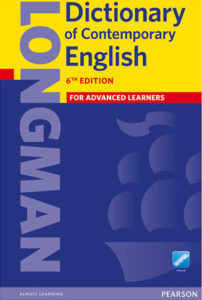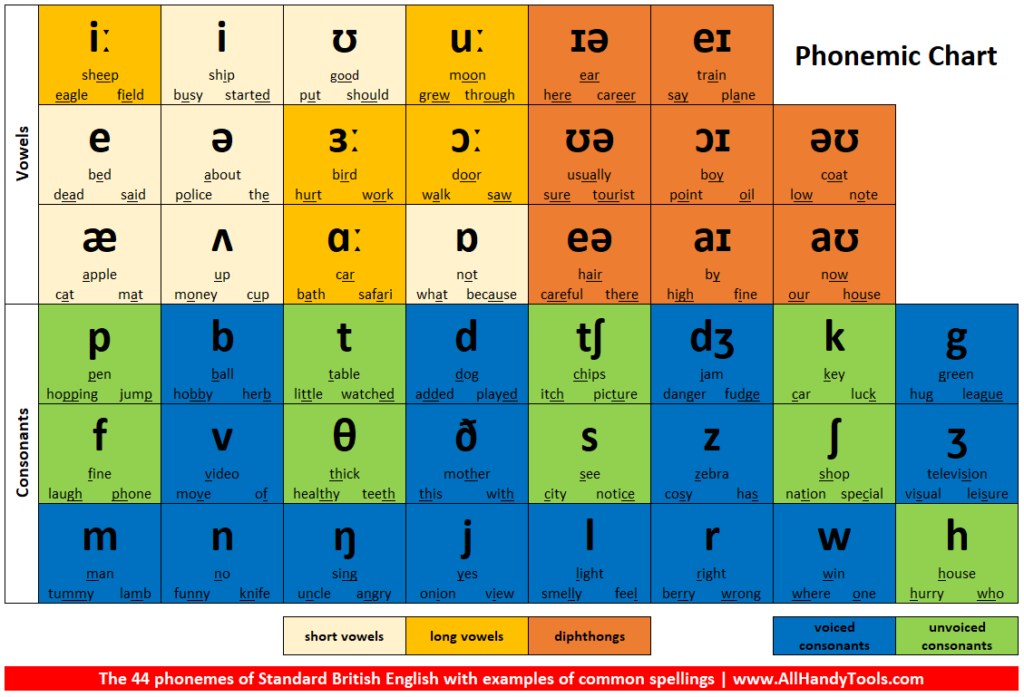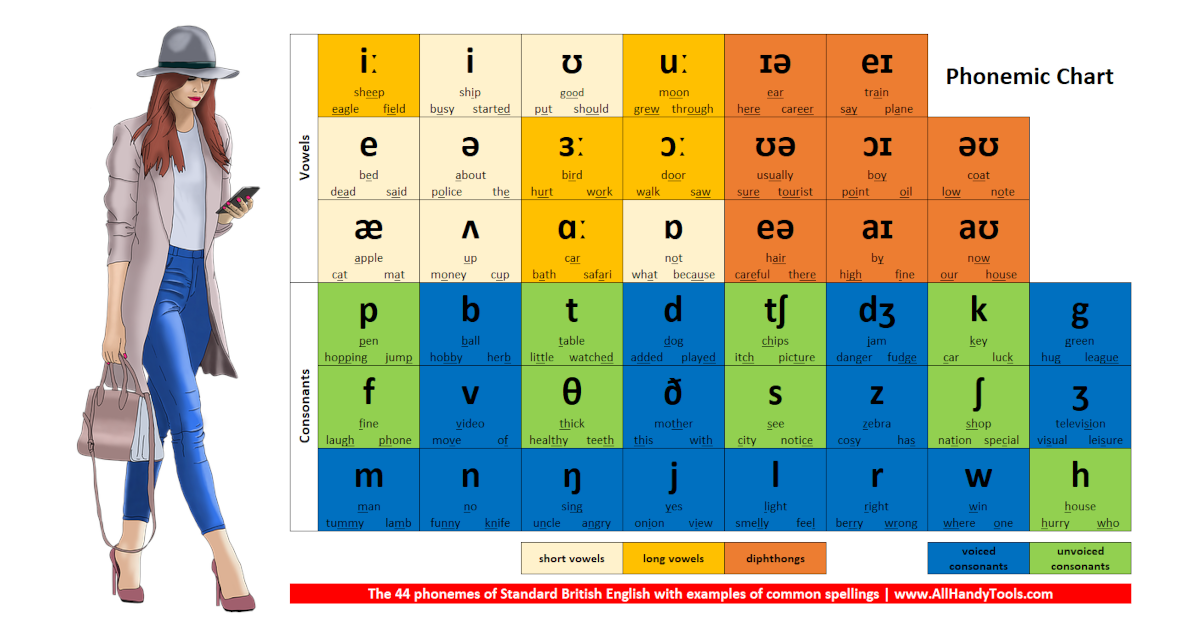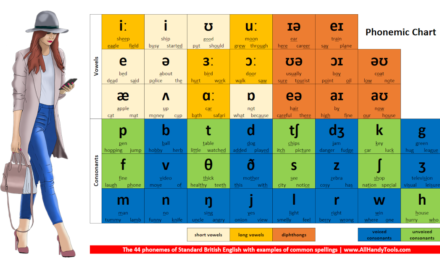What is a phoneme?
A phoneme is “any one of the set of smallest units of speech in a language that make the difference between one word and another. In English, for instance, the /s/ sound in sip and the /z/ sound in zip represent two different phonemes” (Oxford Advanced Learner’s Dictionary). In other words, a phoneme is a speech sound. It is the smallest unit of sound that distinguishes one word from another. Since sounds cannot be written, we use letters to represent or stand for the sounds. It is generally agreed that there are approximately 44 sounds in English, with some variation dependent on accent and articulation. The 44 English phonemes are represented by the 26 letters of the alphabet individually and in combination.
The 44 English sounds can be divided into two major categories – consonants and vowels. A consonant sound is one in which the air flow is cut off, either partially or completely, when the sound is produced. In contrast, a vowel sound is one in which the air flow is unobstructed when the sound is made. The vowel sounds are the music, or movement, of our language. The 44 phonemes represented below are in line with the International Phonetic Alphabet.
What is the International Phonetic Alphabet (IPA)?
How can you pronounce a word that you have never read? It can be a bit tricky. How about a word in a foreign language? Now that must be impossible! Or is it? Imagine a set of symbols that could tell you how to pronounce any word in any language on the planet? Well that is exactly what the International Phonetic Alphabet is. Currently, the IPA consists of 107 sound symbols, 52 diacritics (accents) and 4 prosodic marks (intonations) encompassing virtually every phoneme used in every language on the earth. So for any written word, you can identify the associated phoneme symbols, and with a bit of practice, pronounce the word!
IPA is a system for representing phonetic sounds with symbols. It helps us to pronounce a word correctly. For instance, we see the word “muscle” in a book and do not know what it means and how to pronounce it. We look at the definition in the dictionary, and learn that it is “a piece of body tissue that you make tight and relax in order to move a particular part of the body”. Then, we look at the IPA transcription in the dictionary, which will tell us how to pronounce the word: /ˈmʌsl/. If we understand these symbols then we will know the correct pronunciation.
In English, a letter can have several sounds. Therefore, the spelling of a word does not help us know the correct sound. IPA is a method of representing the letters in a word as a sound. For instance, the letter “c” in “cold” and “ice” are pronounced differently: /k/ and /s/. The word “again” could be pronounced as /əˈɡen/ or /əˈɡeɪn/ (both are correct). The word “tear” could be pronounced as /teə(r)/ or /tɪə(r)/ but the meanings are not the same. The word “duplicate” is pronounced as /ˈdjuːplɪkeɪt/ when it is a verb, but /ˈdjuːplɪkət/ when it is an adjective or a noun.
Now that you are probably aware of the importance of the IPA symbols, aren’t you?
Các ký hiệu trong bảng chữ cái phiên âm quốc tế IPA dành cho tiếng Anh
| Ký hiệu | Mô tả |
| / | Bắt đầu và kết thúc một phiên âm. Ví dụ: handy = /ˈhændi/ |
| ˈ |
Cho biết âm tiết (syllable) ngay sau ký hiệu này là trọng âm và do đó cần phát âm rõ với âm độ cao hơn. Ví dụ: ago = /əˈɡəʊ/ (nhấn vào âm tiết thứ hai) |
| . |
Bắt đầu của một âm tiết mới. Ví dụ: excellence = /ˈek.səl.əns/. Chú ý: Từ điển Cambridge thường sử dụng ký hiệu này, còn từ điển Oxford thường bỏ qua do nhìn hơi rối mắt. |
| t̬ |
Chỉ xuất hiện với cách phát âm Anh-Mỹ: âm /t/ phát âm như /d/. Ví dụ: letter = /ˈletə(r)/ (Anh Anh) hoặc /ˈlet̬.ɚ/ (Anh Mỹ) |
| (r) hoặc ʳ |
Cho biết âm /r/ chỉ được phát âm nếu từ sau đó có âm bắt đầu là phụ âm. Ví dụ: far = /fɑː(r)/ hoặc /fɑːʳ/ |
| ᵊ |
Cho biết âm/ə/ có thể phát ra hoặc không. Ví dụ: excellent = /ˈek.sᵊl.ᵊnt/ |
Nguyên âm dài có ký hiệu đồng hồ cát nhìn như dấu hai chấm. Đây là các nguyên âm cần phát âm dài hơn và thường phải nhấn.
| Nguyên âm dài (long vowels) | |
| IPA | Ví dụ |
| iː |
free /friː/ lean /liːn/ |
| uː |
shoe /ʃuː/ tool = /tuːl/ |
| ɑː |
army /ˈɑːmi/ bar /bɑː(r)/ |
| ɔː |
floor /flɔː(r)/ organ /ˈɔːɡən/ |
| ɜː |
curve /kɜːv/ earn /ɜːn/ |
Nguyên âm ngắn cần được phát âm nhanh, không kéo dài như nguyên âm dài.
| Nguyên âm ngắn (short vowels) | |
| IPA | Ví dụ |
| ɪ |
fit /fɪt/ imagine /ɪˈmædʒɪn/ |
| ʊ |
book /bʊk/ full /fʊl/ |
| ʌ |
hug /hʌɡ/ duck /dʌk/ |
| ɒ |
dot /dɒt/ opt /ɒpt/ |
| ə |
ahead /əˈhed/ camera /ˈkæmrə/ |
| e hoặc ɛ |
pet /pet/ dread /dred/ |
| æ |
cat /kæt/ flat /flæt/ |
|
ɚ (Anh Mỹ) |
mother /ˈmʌðə(r)/ father /ˈfɑːðə(r)/ |
|
ɝː (Anh Mỹ) |
girl /ɡɜːl/ learn /lɜːn/ |
Nguyên âm đôi là sự kết hợp 2 nguyên âm (vowel) vào thành một âm tiết (syllable).
| Nguyên âm đôi (dipthongs) | |
| IPA | Ví dụ |
| ɪə |
hear /hɪə(r)/ cheer /tʃɪə(r)/ |
| ʊə |
tour /tʊə(r)/ cure /kjʊə(r)/ |
| aɪ |
tie /taɪ/ fly /flaɪ/ |
| ɔɪ |
boy /bɔɪ/ oyster /ˈɔɪstə(r)/ |
| əʊ |
flow /fləʊ/ hold /həʊld/ |
| eə hoặc ɛə |
airport /ˈeəpɔːt/ care /keə(r)/ |
| aʊ |
cow /kaʊ/ town /taʊn/ |
| eɪ |
face /feɪs/ case /keɪs/ |
|
oʊ (Anh Mỹ) |
know /nəʊ/ fold /fəʊld/ |
Các phụ âm có thể là vô thanh (voiceless) hoặc hữu thanh (voiced). Phụ âm vô thanh được tạo ra từ phần khoang miệng ngoài, trong khi phụ âm hữu thanh được phát ra từ cổ họng. Có thể đặt ngón tay lên cổ họng và phát âm để thấy sự khác biệt này (âm hữu thanh sẽ làm họng rung nhiều hơn do âm thanh được tạo ra từ khu vực này). Ví dụ: Vị trí lưỡi trong miệng khi phát âm /p/ và /b/ là như nhau nhưng /p/ là phụ âm vô thanh còn /b/ là phụ âm hữu thanh.
Có 8 cặp phụ âm vô thanh – hữu thanh tương ứng nhau, trong đó mỗi cặp có âm thanh được tạo ra với vị trí lưỡi giống nhau, chỉ khác một phụ âm là vô thanh và phụ âm còn lại là hữu thanh: {/p/~/b/}, {/t/~/d/}, {/tʃ/~/dʒ/}, {/k/~/g/}, {/f/~/v/}, {/θ/~/ð/}, {/s/~/z/}, {/ʃ/~/ʒ/}.
Các phụ âm còn lại không ghép cặp được theo quy tắc trên bao gồm: /m/, /n/, /ŋ/, /h/, /l/, /r/, /w/, /j/. Trong số 8 phụ âm này chỉ có /h/ là vô thanh, còn lại là hữu thanh.
| Phụ âm vô thanh (Voiceless consonants) | |
| IPA | Ví dụ |
| p |
pad /pæd/ stop /stɒp/ apple /ˈæpl/ |
| t |
tea /tiː/ trouser /ˈtraʊzə(r)/ hat /hæt/ |
| tʃ |
chocolate /ˈtʃɒklət/ change /tʃeɪndʒ/ teacher /ˈtiːtʃə(r)/ |
| k |
coconut /ˈkəʊkənʌt/ kick /kɪk/ call /kɔːl/ |
| f |
film /fɪlm/ off /ɒf/ forward /ˈfɔːwəd/ |
| θ |
think /θɪŋk/ three /θriː/ earth /ɜːθ/ |
| s |
store /stɔː(r)/ sun /sʌn/ best /best/ |
| ʃ |
show /ʃəʊ/ fish /fɪʃ/ workshop /ˈwɜːkʃɒp/ |
| h |
high /haɪ/ how /haʊ/ horse /hɔːs/ |
| Phụ âm hữu thanh (Voiced consonants) | |
| IPA | Ví dụ |
| b |
bad /bæd/ bowl /bəʊl/ beef /biːf/ |
| d |
day /deɪ/ deer /dɪə(r)/ mood /muːd/ |
| dʒ |
jazz /dʒæz/ jungle /ˈdʒʌŋɡl/ challenge /ˈtʃælɪndʒ/ |
| g |
grow /ɡrəʊ/ dig /dɪɡ/ gear /ɡɪə(r)/ |
| v |
vice /vaɪs/ volume /ˈvɒljuːm/ live /lɪv/ |
| ð |
they /ðeɪ/ there /ðeə(r)/ although /ɔːlˈðəʊ/ |
| z |
zone /zəʊn/ busy /ˈbɪzi/ quiz /kwɪz/ |
| ʒ |
pleasure /ˈpleʒə(r)/ explosion /ɪkˈspləʊʒn/ television /ˈtelɪvɪʒn/ |
| m |
milk /mɪlk/ money /ˈmʌni/ make /meɪk/ |
| n |
new /njuː/ fan /fæn/ now /naʊ/ |
| ŋ |
drink /drɪŋk/ finger /ˈfɪŋɡə(r)/ long /lɒŋ/ |
| l |
light /laɪt/ laptop /ˈlæptɒp/ poll /pəʊl/ |
| r |
rose /rəʊz/ run /rʌn/ trip /trɪp/ |
| w |
win /wɪn/ wife /waɪf/ wound /wuːnd/ |
| j |
yes /jes/ young /jʌŋ/ yard /jɑːd/ |
Nên dùng từ điển nào để tra phiên âm tiếng Anh?
Nếu đã có một vốn từ vựng tiếng Anh tương đối rồi thì bạn nên dùng từ điển Anh-Anh thay vì từ điển Anh-Việt. Có 3 cuốn từ điển hàng đầu hiện nay là Oxford Advanced Learner’s Dictionary, Cambridge Advanced Learner’s Dictionary và Longman Dictionary of Contemporary English. Các từ điển này đều có bản giấy và bản phần mềm cài đặt trên PC, laptop, smartphone, tablet. Ngoài ra, bạn cũng có thể tra cứu nhanh trên Web:
- Oxford: https://www.oxfordlearnersdictionaries.com
- Cambridge: https://dictionary.cambridge.org
- Longman: https://www.ldoceonline.com
Các từ điển trên đều có phiên âm quốc tế IPA kèm theo âm thanh mẫu Anh Anh và Anh Mỹ.



Luyện tập
Sau khi đã luyện tập với các ví dụ ở phần trên, bạn thử tra từ điển những từ sau xem cách phát âm như thế nào là đúng, đặc biệt chú ý trọng âm, sự khác biệt giữa cách phát âm Anh Anh và Anh Mỹ:
- advertisement
- encyclopedia
- digital
- accountability
- willingness
- warrior
- simultaneously
- sanction
- regulatory
- prosperity
- prestigious
- bureaucracy
- characterize
- consolidate
- …
Đừng ngại mở từ điển và chọn bất cứ từ nào bạn thích rồi tra xem phiên âm từ đó thế nào nhé.
Tóm tắt lại bài giảng và bảng tổng hợp 44 loại âm tiết tiếng Anh
Như bạn đã thấy qua phần trên, mặc dù bảng chữ cái tiếng Anh chỉ có 26 chữ (A-Z) nhưng lại có đến 44 âm vị (phonemes) khác nhau. Các âm này giúp phân biệt từ hoặc nghĩa của từ với nhau. Chúng ta sử dụng 44 ký hiệu trong bảng phiên âm quốc tế IPA để phiên âm tiếng Anh. Có nhiều cách kết hợp các chữ cái lại với nhau (gọi là graphemes) để diễn tả âm thanh.
Bạn nên lưu lại bảng tổng hợp 44 loại âm tiết tiếng Anh dưới đây. Liên hệ All Handy Tools nếu bạn muốn nhận được file ảnh có chất lượng cao hơn nữa.

44 âm tiếng Anh (ở đây là Anh Anh hay British English) được chia thành 2 loại là phụ âm (consonants) và nguyên âm (vowels). Dưới đây là danh sách 44 âm vị kèm theo ký hiệu IPA (International Phonetic Alphabet) và một số ví dụ.
24 phụ âm
| IPA | Graphemes | Examples |
| b | b, bb | bug, bubble |
| d | d, dd, ed | dad, add, milled |
| f | f, ff, ph, gh, lf, ft | fat, cliff, phone, enough, half, often |
| g | g, gg, gh,gu,gue | gun, egg, ghost, guest, prologue |
| h | h, wh | hop, who |
| dʒ | j, ge, g, dge, di, gg | jam, wage, giraffe, edge, soldier, exaggerate |
| k | k, c, ch, cc, lk, qu ,q(u), ck, x | kit, cat, chris, accent, folk, bouquet, queen, rack, box |
| l | l, ll | live, well |
| m | m, mm, mb, mn, lm | man, summer, comb, column, palm |
| n | n, nn,kn, gn, pn, mn | net, funny, know, gnat, pneumonic, mneumonic |
| p | p, pp | pin, dippy |
| r | r, rr, wr, rh | run, carrot, wrench, rhyme |
| s | s, ss, c, sc, ps, st, ce, se | sit, less, circle, scene, psycho, listen, pace, course |
| t | t, tt, th, ed | tip, matter, thomas, ripped |
| v | v, f, ph, ve | vine, of, stephen, five |
| w | w, wh, u, o | wit, why, quick, choir |
| z | z, zz, s, ss, x, ze, se | zed, buzz, his, scissors, xylophone, craze |
| ʒ | s, si, z | treasure, division, azure |
| tʃ | ch, tch, tu, ti, te | chip, watch, future, action, righteous |
| ʃ | sh, ce, s, ci, si, ch, sci, ti | sham, ocean, sure, special, pension, machine, conscience, station |
| θ | th | thongs |
| ð | th | leather |
| ŋ | ng, n, ngue | ring, pink, tongue |
| j | y, i, j | you, onion, hallelujah |
20 nguyên âm
| IPA | Graphemes | Examples |
| æ | a, ai, au | cat, plaid, laugh |
| eɪ | a, ai, eigh, aigh, ay, er, et, ei, au, a_e, ea, ey | bay, maid, weigh, straight, pay, foyer, filet, eight, gauge, mate, break, they |
| e | e, ea, u, ie, ai, a, eo, ei, ae | end, bread, bury, friend, said, many, leopard, heifer, aesthetic |
| i: | e, ee, ea, y, ey, oe, ie, i, ei, eo, ay | be, bee, meat, lady, key, phoenix, grief, ski, deceive, people, quay |
| ɪ | i, e, o, u, ui, y, ie | it, england, women, busy, guild, gym, sieve |
| aɪ | i, y, igh, ie, uy, ye, ai, is, eigh, i_e | spider, sky, night, pie, guy, stye, aisle, island, height, kite |
| ɒ | a, ho, au, aw, ough | swan, honest, maul, slaw, fought |
| oʊ | o, oa, o_e, oe, ow, ough, eau, oo, ew | open, moat, bone, toe, sow, dough, beau, brooch, sew |
| ʊ | o, oo, u,ou | wolf, look, bush, would |
| ʌ | u, o, oo, ou | lug, monkey, blood, double |
| u: | o, oo, ew, ue, u_e, oe, ough, ui, oew, ou | who, loon, dew, blue, flute, shoe, through, fruit, manoeuvre, group |
| ɔɪ | oi, oy, uoy | join, boy, buoy |
| aʊ | ow, ou, ough | now, shout, bough |
| ə | a, er, i, ar, our, ur | about, ladder, pencil, dollar, honour, augur |
| eəʳ | air, are, ear, ere, eir, ayer | chair, dare, pear, where, their, prayer |
| ɑ: | a | arm |
| ɜ:ʳ | ir, er, ur, ear, or, our, yr | bird, term, burn, pearl, word, journey, myrtle |
| ɔ: | aw, a, or, oor, ore, oar, our, augh, ar, ough, au | paw, ball, fork, poor, fore, board, four, taught, war, bought, sauce |
| ɪəʳ | ear, eer, ere, ier | ear, steer, here, tier |
| ʊəʳ | ure, our | cure, tourist |
Lời kết
Như vậy là bạn đã biết tất cả những gì cần thiết để có thể đọc được phiên âm tiếng Anh quốc tế một cách chuẩn xác. Từ bây giờ mỗi khi học một từ mới, bạn hãy giữ thói quen tra phiên âm từ đó nhé. Học một từ không phải chỉ đơn giản là biết nghĩa mà còn cần biết phát âm chuẩn nữa. Chúc bạn thành công!
AllHandyTools.com

